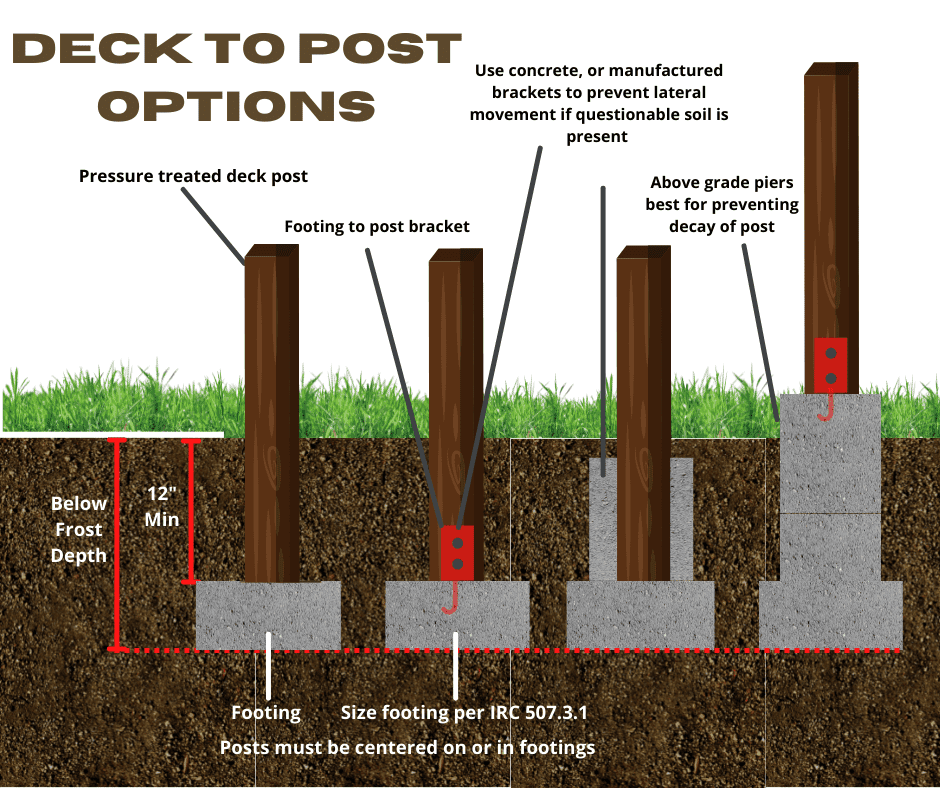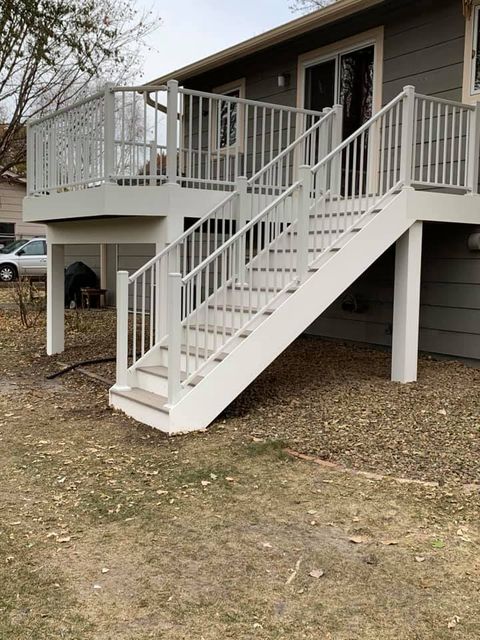Ensure Security and Long Life With Correctly Mounted Deck Footings
Deck footings may not be the most glamorous aspect of deck building and construction, but they play a vital role in ensuring security and long life. In this discussion, we will explore the importance of correct deck grounds, elements to consider throughout installment, various types of footings readily available, detailed setup guide, and upkeep suggestions for ensuring durable grounds.

Significance of Correct Deck Grounds
Why are properly installed deck footings critical for the security and long life of your deck? Deck grounds are the structure on which the deck relaxes, moving the tons from the deck to the ground.
First of all, appropriately mounted deck footings distribute the weight of the deck evenly, preventing any uneven settling or sinking. This is particularly important in locations with unpredictable dirt, as it aids to alleviate the danger of the deck moving or breaking down. In addition, well-installed grounds make sure that the deck stays level, protecting against any type of structural damages that can take place when a deck comes to be unequal.
Secondly, correctly installed grounds give a solid anchor for the deck, preventing too much motion and sway. This aids to preserve the structural honesty of the deck, minimizing the risk of mishaps or injuries. It additionally lessens the wear and tear on the deck, permitting it to stand up to the aspects and normal use for a longer time period.
Aspects to Take Into Consideration for Deck Footing Installation
When installing deck grounds, there are numerous essential elements to think about for proper installation. Various dirt types have different load-bearing capacities, so it is crucial to conduct a dirt test to ensure the grounds can sustain the weight of the deck and its residents. By taking into account these aspects, you can ensure the correct installment of deck footings and delight in a lasting and secure deck.
Kinds Of Deck Footings to Pick From
There are numerous different sorts of deck footings available for you to select from. Each type has its very own advantages and disadvantages, so it's crucial to consider your certain needs and the problems of your deck before choosing.
One common kind of deck ground is the concrete ground. This includes digging holes in the ground and putting concrete right into them to produce a solid foundation. Concrete grounds are long lasting and supply exceptional stability, making them ideal for decks in locations with difficult soil conditions or high wind lots.
One more choice is the helical pier footing, which is composed of a steel shaft with helical plates that are screwed right into the ground. These footings fast to set up and can be used in various dirt types, including sandy or clay dirts. They are likewise adjustable, enabling simple leveling of the deck.
Sonotube grounds are another preferred option. These footings are developed by positioning a cardboard tube in a hole and loading it with concrete. Sonotube footings are relatively very easy to set up and provide ample stability for smaller sized decks or in areas with much less demanding dirt problems.

When choosing the sort of deck footing, it's important to think about elements such as soil conditions, deck size and weight, local building regulations, and personal choices. By selecting the appropriate ground kind, you can make certain the security and long life of your deck.
Step-by-Step Overview for Setting Up Deck Footings

Figure out the area: Begin by noting the specific position of each ground making use of stakes and string (Deck Footings). Take into consideration any kind of local building codes or laws regarding setback distances
Dig the openings: Make use of a post hole digger or an auger to dig the holes for the grounds. Usually, a deepness of at the very least 36 inches is recommended for stability.
Level the openings: Make sure that the bases of the openings are degree (Deck Footings). This can be achieved by using a level or a straight board across the top of the holes
Add gravel: Location a layer of gravel at the end of each hole to boost water drainage and prevent the footing from sinking into the soil over time.
Insert the footing forms: Insert the footing forms right into the openings, guaranteeing they are centered and degree. Use stakes to protect them in area.
Mix and put concrete: Adhere to the guidelines on the concrete mix bag to prepare the concrete. Put the concrete right into the ground types, filling them completely.
Smooth the surface: Use a trowel to smooth the surface of the concrete and get rid of any kind of air pockets. Permit the Deck Footings concrete to treat according to the maker's directions.
Maintenance Tips for Resilient Deck Footings
Correct maintenance is crucial for making certain the durability and security of deck footings. By consistently checking and maintaining your deck grounds, you can prevent damage and possible security threats.
Routine cleansing is also important for preserving deck footings. Dust, debris, and plants can gather around the footings, which can cause moisture build-up and decay. Cleaning the grounds regularly, utilizing a brush or a stress washing machine, can help avoid these concerns and extend the lifespan of your deck.
In enhancement to cleansing, it is very important to keep the area around the footings clear of any kind of blockages. Avoid stacking items against the footings or enabling plants to expand also near them. These blockages can trap wetness and trigger the grounds to degrade with time.
Lastly, regular resealing of the footings is recommended to safeguard them from wetness and various other ecological variables. Using a waterproof sealant can help prevent water damage and extend the lifespan of the footings.
Conclusion
Finally, proper installation of deck footings is essential for guaranteeing stability and durability of your deck. Elements such as soil type, lots ability, and neighborhood structure codes require to be thought about when selecting the best type of deck footings. Following a step-by-step overview for installment and routine maintenance will aid to make certain the grounds stay resilient and lasting.
In this conversation, we will certainly check out the value of proper deck grounds, variables to think about during installation, various types of footings readily available, step-by-step installation overview, and maintenance pointers for making sure resilient footings. Deck grounds are the foundation on which the deck relaxes, transferring the lots from the deck to the ground.One typical type of deck ground is the concrete footing. Insert the ground forms: Put the footing forms right into the openings, ensuring they are focused and level.In verdict, appropriate installment of deck grounds is essential for making certain stability and long life of your deck.
Comments on “From Concept to Concrete: The Important Duty of Deck Footings in Sturdy and Safe Decks”